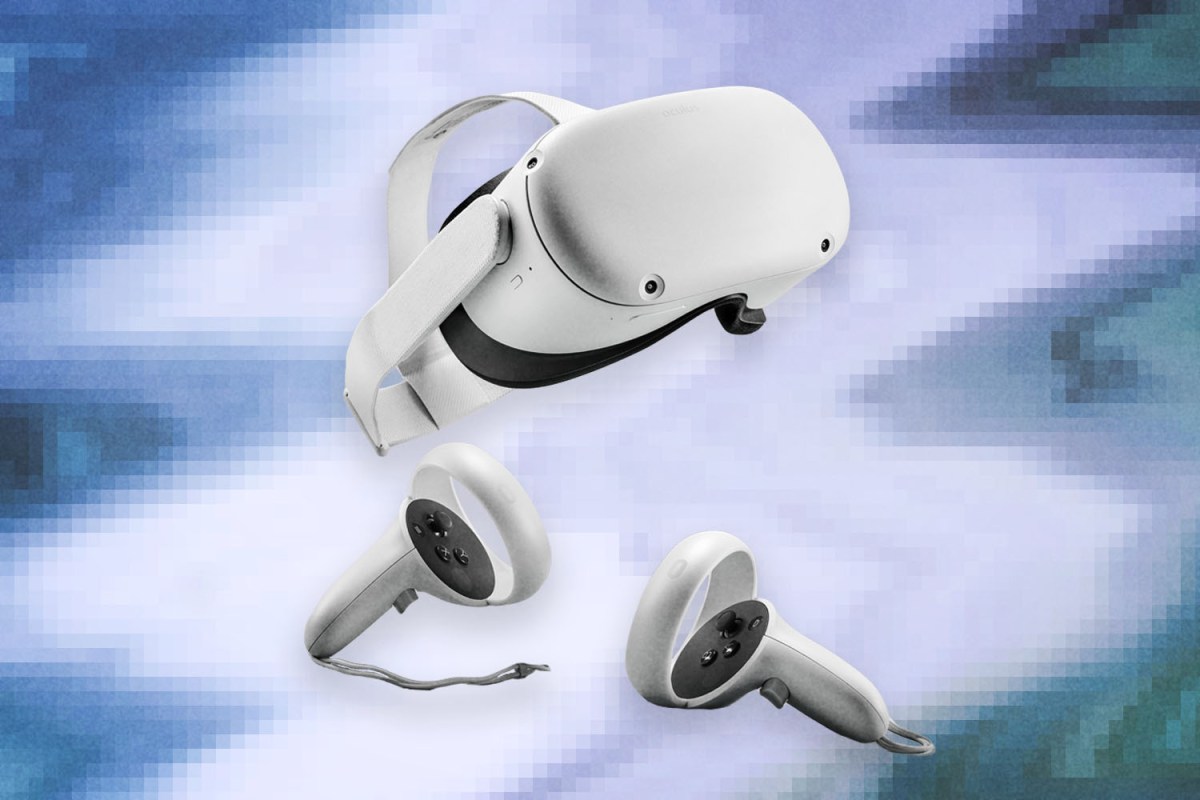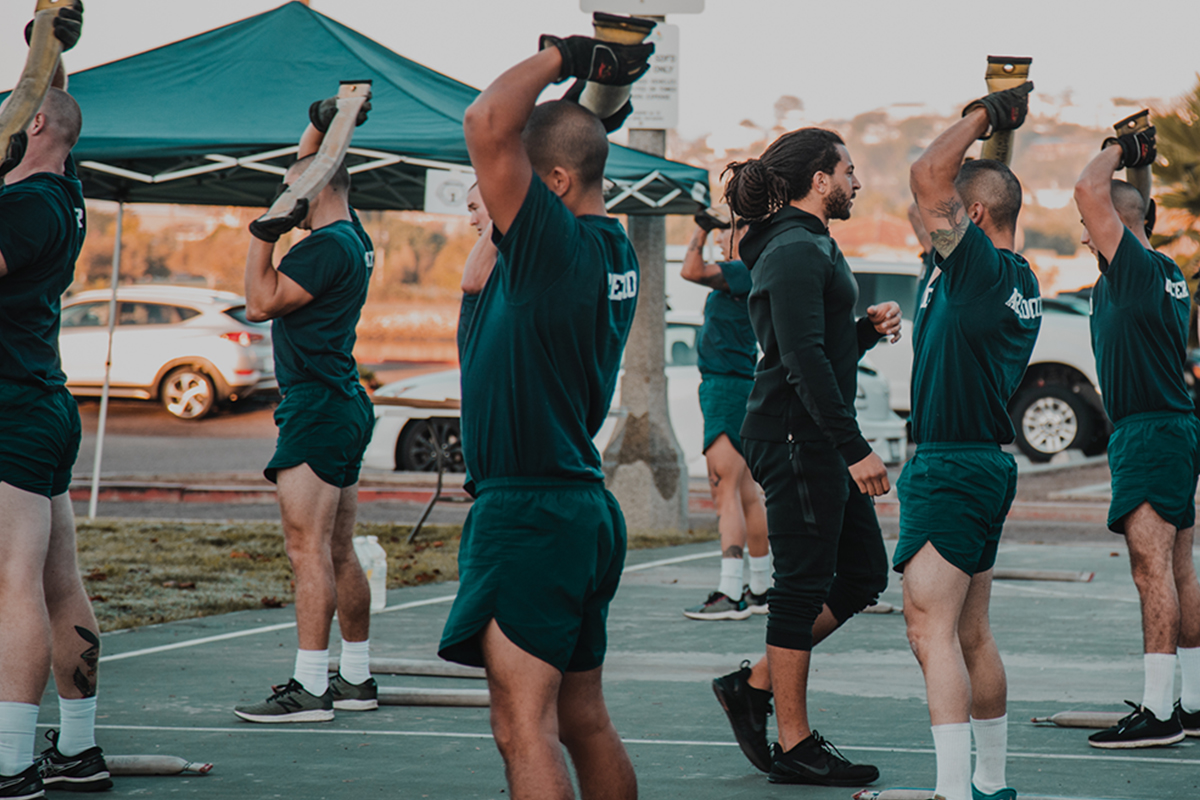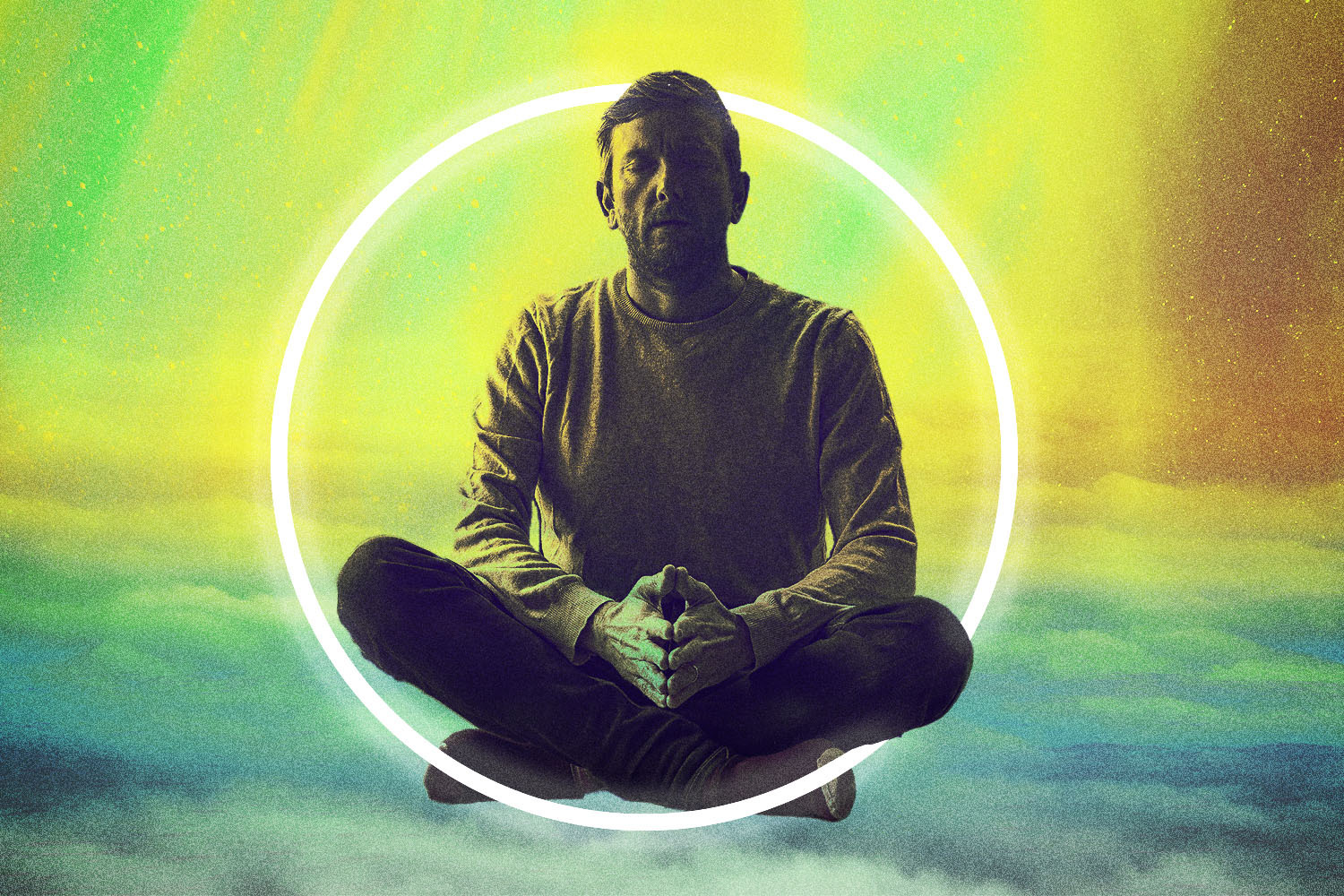I’ve had a hell of a day.
This morning, I practiced tai chi on Scotland’s Isle of Skye. In the afternoon, I meditated in a field in New Zealand, keeping my gaze on Orion as I took easy breaths in through my nose. And then, for good measure, I ended the day shadowboxing on rice terraces in the Chinese countryside.
There are neither COVID travel restrictions nor earthly limits in the augmented galaxy of Supernatural, a virtual reality platform venture by LA-based Within. When the company was acquired by Meta (formerly known as Facebook) last year for a reported $400 million, Supernatural was considered its crown jewel, an app that brings amateur athletes straight into their favorite screensavers for uptempo, 30-minutes-or-less workouts in the same mode popularized by Peloton.
When Mark Zuckerberg outlined his vision last year for transitioning to the “metaverse,” a string of three-dimensional worlds meant to be experienced and explored via virtual reality headsets, most of us had no clue what the hell he was on about. Facebook had changed its name, apparently, and purchased Oculus, which was now Meta Quest, and soon we’d all have weird-ass, life-sized avatars and “shop” at Walmart from our couches. Great. No thanks.
The jury is very much out on whether Zuckerberg’s plan has any legs. The company is beset by internal division over its sharp left turn from social into VR, though it’s clear which side its founder is on. Facebook’s creator reportedly spent $10 billion last year on VR technologies, so sure is he that it’s the best way forward for the internet behemoth, but Meta stock plummeted by 26% last week as the company reported its first ever quarterly decline in users. Meanwhile, a Meta Quest user just reported enduring a harrowing “virtual gang rape” earlier this month while navigating Horizon Worlds, a sort of open world universe that figures to be the flagship of Zuckerberg’s metaverse. In response, Meta quickly developed and rolled out a feature called Personal Boundary to make sure strangers can’t get within four virtual feet of each other.
It’s way too early to tell how Facebook’s — er, Meta’s — metaversal pivot will play out writ large. But after spending a few weeks with the Oculus 2, the most recent headset release, I was somewhat surprised to discover that there’s at least one arena where Meta’s madcap plan belongs, and even thrives: fitness.
Meta has purchased six VR studios in the last 24 months. Fitness has been an obvious priority from the outset. A deal that was finalized in early 2020 was a sign of things to come, when Meta acquired Beat Saber, a popular “rhythm game,” where users slash neon musical notes in time with the beat. But while that interface feels like a latter-day amalgamation of the Wii and Guitar Hero, Supernatural is about more than mere movement. Meta’s latest venture wants to cash in on the pandemic era’s workout subscription craze with a platform that feels less like a video game and more like a lifestyle.
If you don’t read another word, know this: Supernatural is a huge win for Meta. It’s fitness at its most basic and creative, it’s a fantastic response to the connected fitness boom, and above all, it’s mind-numbingly fun — which, if you’re familiar with our fitness coverage, should always be high on your priority list.
Zuckerberg has unleashed a bevy of humdingers over the last year-plus. In my humble opinion, here’s one that actually landed:
“A lot of you are already using Quest to stay fit, it lets you work out in some completely new ways,” he said in a keynote address. “It’s kind of like a Peloton, but instead of your bike you just have your VR headset and with it, you can do anything from boxing lessons to sword-fighting to even dancing.”
So what exactly is Supernatural?
And what does it look like? What does it feel like to work out on the platform? Are the workouts difficult? Do you actually feel like you’re in Scotland, or New Zealand or China? Where do those little handheld “triggers” come into play? And is Supernatural worth its $19-a-month subscription (plus the $300 required to bring home the headset) at a time when our automatic payments for health and wellness services already seem to be spiraling out of control? We’ll do our best to get to all of that.
Assuming you have a basic understanding of how to operate an Oculus, Supernatural is an extremely straightforward and intuitive experience. (Short of putting on a friend’s headset and trying one on at a SoHo showcase a few years ago, I came in a complete neophyte. I picked it up in a day.) Once you enter Supernatural you’ll find yourself on a grassy knoll in the middle of a mountain range. It sure feels like Norway on a summer’s day, though I haven’t been able to confirm. A menu will pop up in front of you with a smattering of programs and one-off workouts. Sessions subdivide into four key groups: box, flow, stretch, meditate.
I spent most of my time trying out “flow” workouts, though I’ve sampled and can confidently recommend them all. If you’ve seen trailers for Supernatural on Instagram or YouTube, you’ve undoubtedly seen a trainee standing on what appears to be the yoga mat equivalent of a flying carpet, levitating in some obnoxiously gorgeous corner of the world, fighting what appear to be giant orbs as they’re released with rhythmic celerity by a mysterious portal. The trailers weren’t bullshit. That’s exactly what Supernatural is, especially if you’re trying a flow or boxing workout.
As you stand in your basement or bedroom IRL, your brain and body are transported to a part of the world where your sole mission is to destroy as many orbs as possible. In the flow workouts, those triggers in your hands project forward into virtual space as clubs — one white, one black. You hit the corresponding orbs as they hurtle towards you. In boxing workouts, those clubs become boxing gloves. Sometimes orbs come in sideways, or upside down, or two at a time. In the high-intensity levels, they come seemingly nonstop, and you’ll find yourself frequently hitting white orbs with black instruments, or vice versa, which doesn’t destroy them, but sends them off into the air with an unsatisfying “blomp” sound. At the end of each session, you’re given a percentage for accuracy and a percentage for power. The idea is to hit as many as possible, as hard as possible, with full extension.
What else? In the flow workouts, triangles with varying hypotenuses come flying towards you in between the orbs. You’re supposed to squat or side squat in order to make sure your body “fits” within the triangle. In the boxing workouts, bars are aimed at your head, designed to teach you the importance of ducking, weaving and moving about the ring. Some arrive in undulating patterns, so when you’re really feeling it, you’ll duck down, then side to side, then emerge for an uppercut.
Like every other connected fitness platform in existence, Supernatural comes equipped with bubbly trainers who will stop at nothing to get you in shape. But their role is more cameo than guide. They’ll stop by for some warmups, remind you how to perform a particular workout, then narrate the experience with punctuations whenever the music drops or you’re meant to turn in place to handle a new portal with a new supply of those damned orbs.
The trains are also there to introduce whatever location you’re going to be working out in. This cannot be stressed enough — exercising next to the Temple of Horus or inside an Ethiopian volcano never gets old. I literally boxed on the moon last week. Depending on how long of a session you’ve chosen, you get the opportunity to discover at least two or three sites from anywhere in the world (or solar system), which makes it easy to stay excited and engaged. This also obscures the fact that, as movement goes, what you’re doing with your body is rudimentary, and if observed from an outsider, probably looks pretty goofy.
Flow is high-speed tai chi. It’s dancing. It’s play. It’s a form of movement we rarely make time for as adults. Much of our preferred exercise methods involves forward-facing movement. Running, cycling, lifting dumbbells, performing burpees. It’s all happening right in front of us. But flow (boxing, too) requires twists and lateral lunges and full extension of the torso. It’s all-sides movement, the sort that can put years back on your knees and back. Will it up your heart rate and potentially help you lose weight? Sure. Over time. But that’s not the important bit. The magic to Supernatural, and this early foray into VR fitness at large, is the augmented world’s capacity to help us sidestep our insecurities with flailing our arms around like monkeys. (Even though flailing our arms around like monkeys, which has a name, by the way — arboreal locomotion — is precisely what our bodies need.)
When I get in a good “hit streak” during a flow or boxing session, I resemble a madman. I’m grinning and swinging, all teeth and limbs. It doesn’t feel anything like exercise. That doesn’t mean I’m not sweating by the end of a session. Even just seven minutes gets me to at least the lower rung of my target heart rate. It’s more that I’m way too preoccupied with the contrived mission at hand to care that I’m supposed to be tired.
Can Supernatural replace your other workouts?
If there’s one difference between an Oculus and a Peloton, to probe at Zuckerberg’s aspirational comparison, it’s that treating an Oculus as a primary form of exercise doesn’t feel quite right. You could do all of your workouts in VR, and for those more careful about where they allocate their fitness funds (generations older than millennials and Gen Z), spending on the headset and a Supernatural subscription might compel you to stay in-house as much as possible. But Supernatural feels like more of a bulletproof addendum — it’s there, whenever you need it, and converts fitness into escapism (a phrase many thought they’d never read). By contrast, a Peloton is a declaration: this is my tribe. This is how I exercise now.
But considering how many Pelotons have cropped up on online resale marketplaces or become $2,000 laundry racks, perhaps fitness as an additional option, instead of the primary focus, is a mark in the “pro” column for the Oculus. After all, once you start perusing VR, it’s hard not to appreciate its many fringe benefits (one of my favorites is watching Netflix from the couch of a home theater in a giant ski lodge). Too often, people would rather cover up or sell a piece of workout equipment out of shame or guilt for how rarely they used it. But if you have an Oculus, you’re going to use it all the time, for casual reasons as well as cardiovascular ones. You’ll find your way back to Supernatural after a dry spell, I have little doubt.
The main drawbacks to exercising in this way manifest in the physical world. The headset weighs just over a pound, and I’ve felt a bit of neck pain after some sessions. There have been studies linking usage to cervical spine injuries, though many online maintain that the neck muscles strengthen over time, and headset aches are indicative of poor posture (both daily posture, and posture while wearing the tech). There are also concerns that constantly reacting to digital stimuli with our bodies fiddles with our proprioceptive processors, or our general awareness of our bodies moving through space, which has implications on balance and longevity. Plus, at least one person who tested out my headset who suffers from motion sickness said she would need to pop a Dramamine before really diving in.
At 6’3″ with a long wingspan, my biggest worry was space. I carved out a good amount of it for my second trial — after kneeing my desk chair the first time — and had some trouble accepting that I could move freely, even though I was well within my “guardian” area. (When you turn on the headset, you have to laser a circle on the floor that you’ll stay within for the entirety of your session. If you move beyond the line, the headset immediately pauses.)
In other words: VR fitness is still imperfect and will demand tinkering over time. Expect lighter, sweat-resistant hardware, along with more refined handheld devices for moving one’s body through the air. On the software side, Supernatural is constantly updating with new workouts; in theory, it has an endless supply of songs and locations to choose from. It also has an infinite number of orbs to shoot at people, which frustrates me, considering how hard I’ve worked to eliminate thousands thus far.
I get that like crypto or NFTs, there’s a decent chance you’re hoping the metaverse comes and goes without you ever really having to learn what it is. That’s fair enough. I also get that your idea of exercise might just be a couple laps around the track, grounded in the real world. You don’t need to dance next to Mayan ruins to feel like you did something with your day, and in fact might cherish that your workouts get you away from a screen for a few minutes every day. But know this: VR fitness isn’t going anywhere. And it’s actually kind of awesome. It’s here, whether you like it or not, and I actually think you’ll love it. Give it a try. Zuckerberg might be the Charlie Brown of Silicon Valley executives, but he finally did something right.
The Charge will help you move better, think clearer and stay in the game longer. Subscribe to our wellness newsletter today.
























